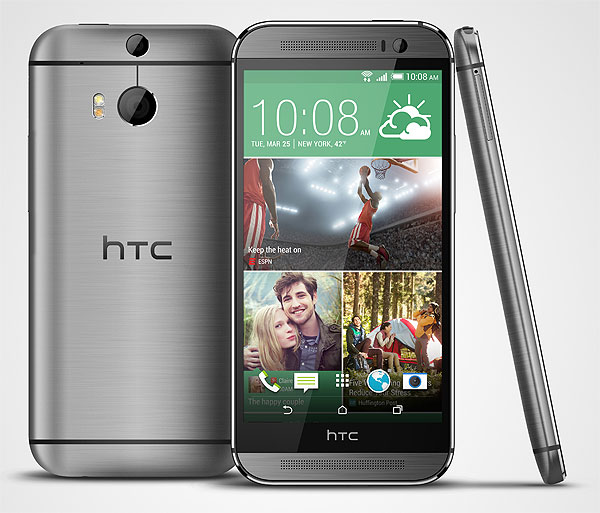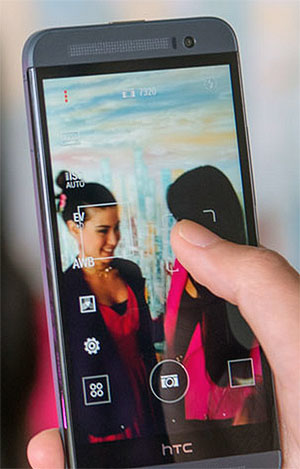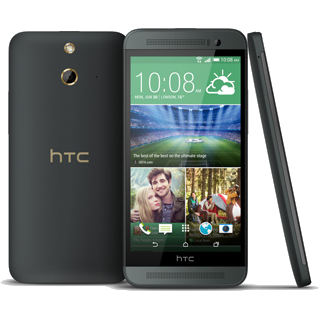HTC One (M8) And One (E8) Review: A Flagship And Its Sidekick
We run HTC's flagship Android smartphone, the One (M8), through our exhaustive benchmark suite. In addition, we take a close look at its less expensive sibling, the HTC One (E8). Both devices are compared and tested against a strong field of competition.
HTC One: The M8 Flagship And E8 Derivative
In a world where Samsung and Apple are gobbling up market share, its surprising to see former smartphone juggernauts struggling to find a niche. Back in 2009, HTC was in the power position, and its Hero was one of the only worthy contenders against the iPhone 3GS. A year later, HTC's Evo 4G was the first WiMAX-enabled phone in the United States. But while Samsung gained momentum with its Galaxy family and Apple capitalized on iPhone momentum, HTC's presence steadily declined.
The HTC One (M7), introduced in 2013, turned the company's fall from grace back the other way. It was almost universally lauded as an exemplary Android-based flagship. But the company continues to work hard for successes. July 2014 marks the first quarter of profitability for HTC since it started losing money in 2013, and the gains are attributable to cost-cutting measures (rather than increased sales). The pressure has never been greater to deliver hardware that takes the success of HTC's One to the next level.
And this is exactly what the HTC One (M8) and newly-introduced/less-costly HTC One (E8) were designed to do.
Released at the end of March, HTC's One (M8) replaced the One (M7) as its premium Android smartphone. The improvements are many, but a larger 5" screen, a redesigned body with 30% more metal, a faster Snapdragon 801 SoC, a dual-camera system capable of creating depth-of-field blur effects after the shot is taken, the addition of a microSD card slot, and a higher-capacity 2600 mAh battery are among the most notable. You wouldn't call the product revolutionary. However, there's a lot to like compared with last generation's One.
The HTC One (E8) followed last month, enabling many of the M8's improvements in a lower-priced package. Intended for parts of Asia and Eastern Europe, it's essentially HTC's One (M8) in a well-built polycarbonate body. The M8's dual-camera system is exchanged for a single 13 MP sensor that isn't as responsive. The TV remote feature gets stripped out. Memory capacity is limited to 16 GB. But otherwise, the rest of the M8's goodness carries over, including the 5" screen and Snapdragon 801 processor with Adreno 330 graphics.
HTC One (E8) pricing is not available in North America, but we understand that a One (M8) sells for over £500 in the United Kingdom without a contract. Compare that to the HTC One (E8), which should be in the £270 range, and you can see that the new budget-friendly implementation could be a real looker in its intended markets. Fundamentally, all the E8 gives up is the metallic case, dual-camera system, and storage capacity. The case is largely aesthetic, the single sensor might be slower, but it captures more resolution, and the built-in flash can be augmented through the use of a microSD card. With all of that in mind, we can't help but hope the E8 finds its way to North America at a relatively low price point.
Since the M8 features a metal housing and the E8 is polycarbonate, there's a marked difference in available colors and finishes. Let's take a closer look.
Get Tom's Hardware's best news and in-depth reviews, straight to your inbox.
Current page: HTC One: The M8 Flagship And E8 Derivative
Next Page Design, Look, And FeelDon Woligroski was a former senior hardware editor for Tom's Hardware. He has covered a wide range of PC hardware topics, including CPUs, GPUs, system building, and emerging technologies.
-
Heironious The pricing says 1,309.00 for it on Amazon? May as well buy it straight from an authorized dealer for half that. It's a gorgeous phone and I don't regret picking it up over the Samsung S5 (mostly because of the cheap plastic of Samsung).Reply -
LordConrad I love my M8 except for that stupid depth-camera, they should remove it and bring back OIS.Reply -
JOSHSKORN Just stop comparing to the iPhone 5s until a comparable 64-bit chip is released and implemented into Android phones. Until then, the iPhone 5s "appears to be faster" (only on benchmarks) but as many of us know, it justifies buying an iPhone for most users, even though a 64-bit processor in a mobile phone may be pointless (for now).Reply -
CaedenV If I were the android type I would get this phone hands-down. If they released a WP version then I would jump all over it over the stuff Nokia has been pushing out in 2014 so far.Reply
The only 'complaints' that I have are the lack of wireless charging (impossible due to the metal back plate right?), and the lack of a sort of Nokia Glance screen (though other android devices are picking up similar features). The cover seems to bring that Glance functionality... but I really don't like that cover and would rather not. The thing is that with my lowly 920 I have built myself an upright wireless charging stand, and with glance screen enabled whenever the device has access to power, it makes a most excellent clock/notification center. With my 920 approaching 2 years old I am starting to look for a replacement, and as of the moment I am not finding one. WP has seemingly abandoned the high end devices, I am not apple compatible, and Android devices have a lot of really neat features... but then you deal with non-standard UIs and gimmickey software. I really hope something really good comes out before Christmas because the 920 is not getting any younger. -
stevessvt Wow, these benchmarks are, by far, the lowest I have seen for the M8. 27K in Antutu? Was power saver on?Reply -
Avus Holy!! $1300 for a phone.... I am too cheap for that...Reply
I am currently using Nexus 5 and happy with it. If I want to buy a phone now, I may want to get an Oneplus One. -
envy14tpe Great phone but that camera is what holds me back from buying it. So Samsung or Google gets my money, although Apple has the best camera. (However, no Apple..screen wayyy to small...Android flagship phones have been over 4" for 2+ years)Reply -
TeKEffect Me and my friend are both having problems with the usb port. They went cheap on the cheapest part. I would google the problem before getting the one.Reply



